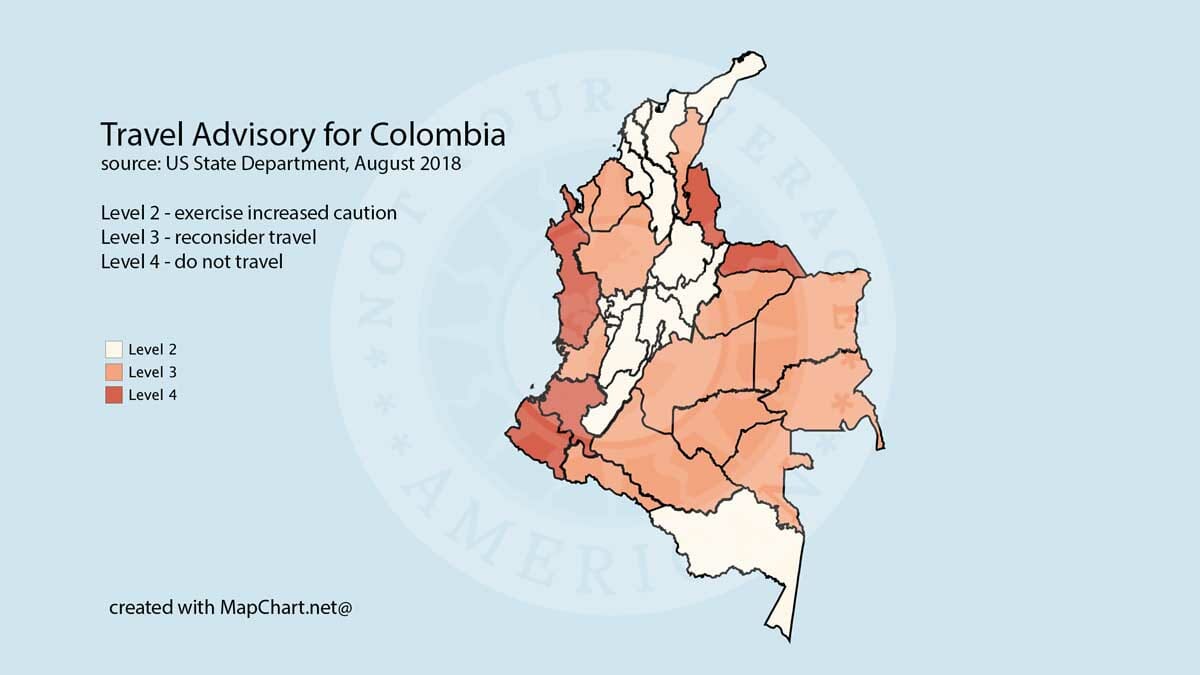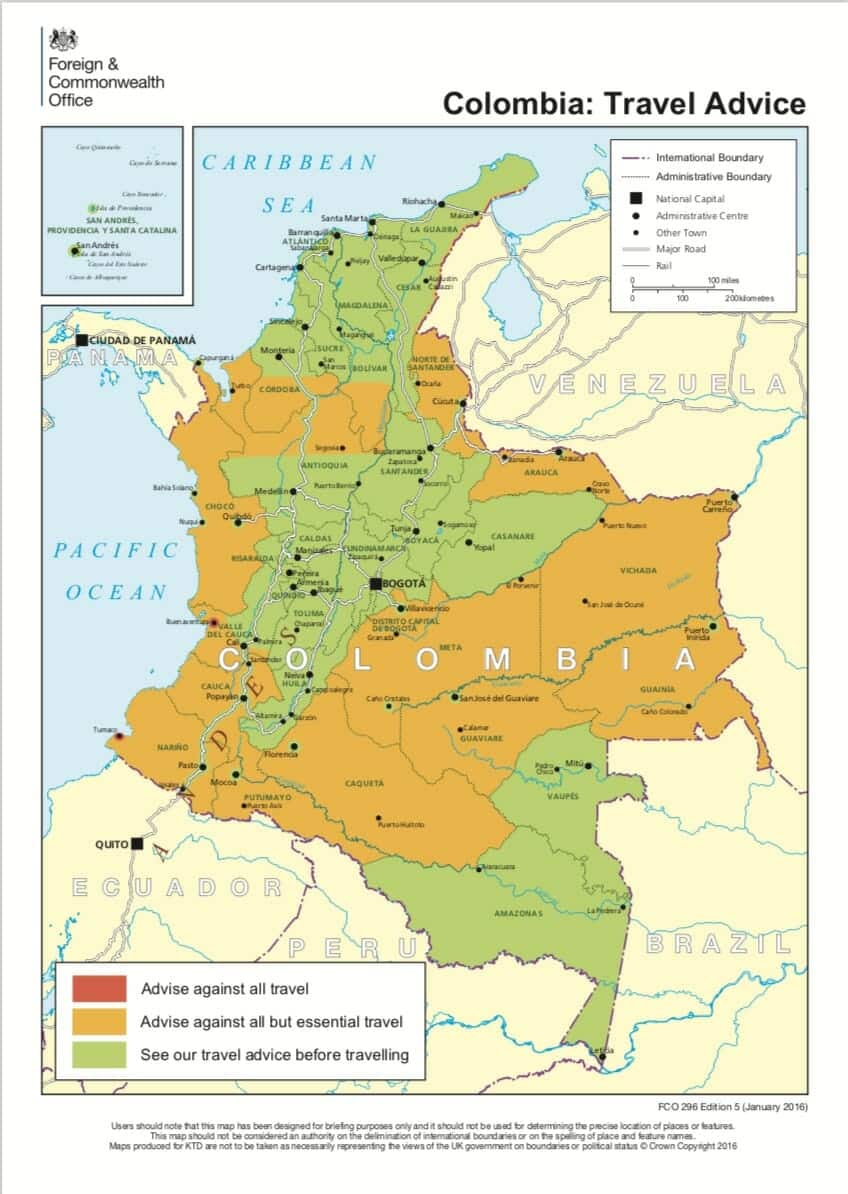What Are The Safety Concerns In Colombia?
According to the US State Department, we should exercise increased caution while traveling in Colombia. Their biggest concerns are crime and terrorism. Their concerns are valid. There have been incidents in the recent past that bear noting, particularly kidnappings along the Ecuadorian border in the Esmeraldas Province. Their warnings for big cities, like Bogotá, remind us very much of the same warnings about Quito, Ecuador. We toured the historic center and more several times, using basic precautions for all big cities in South America.
Furthermore, after having lived and worked under US State Department advisories, we know that they err on the side of caution, sometimes keeping advisories in effect for years after any problems occurred. For example, while living in Ecuador, we were prevented from traveling north of the Napo River. That meant we were unable to visit the Cuyabeno Reserve or many of the eco-lodges in the Yasuni National Park, despite thousands of international visitors safely making those same trips every year.
To make it worse, the advisory throws names into the air that make very little sense to a first-time tourist to Colombia. Therefore, my first step was to search out maps that showed the security concerns in black and white. While I found a few from other nations, none really did a great job of expressing what the US State Department’s advisory. I ended up creating my own.

Other Travel Advisories For Colombia
I began to wonder about those other maps I found online. If other nations gave their citizens warnings, did they use the same information as the United States? Using a Google Image search for «travel advisory» and «Colombia,» I found two other informative maps.


What’s a Traveler To Do?
At this point, I was about ready to throw my hands up in despair. While the half American-side of me argues for precaution, the British side argued for exploration. Or maybe it was just the desire to really travel without worrying about every single bad thing that has happened in Colombia over the past decade or so. Bad things happen everywhere in the world, including the United States. Was I really going to limit our trip because of these maps?
I needed to hear from some people who had actually crossed this border and traveled through Colombia. I went back to the internet, this time Facebook. I posted in one of my favorite groups (Ecuadorian Expats) to ask among the 18,000 members. Writer and traveler Lorraine Caputo came to the rescue. She has traveled in Colombia since 1992. Obviously, she has seen lots of changes in the past decade or so. She and a few others helped confirm that safe passage is not only possible but is the norm.
Obviously, we must follow basic safety precautions like those we learned from our many assignments overseas. And we will have to avoid the most dangerous areas of Colombia. But her article on places to visit in Colombia is what convinced me to be excited about our trip again. I just can’t pass up the opportunity to write about Popoyán and Pasto, about Ipiales and its Ecuadorian neighbor, Tulcan. So cross the border we will… how we get there is still up in the air!















